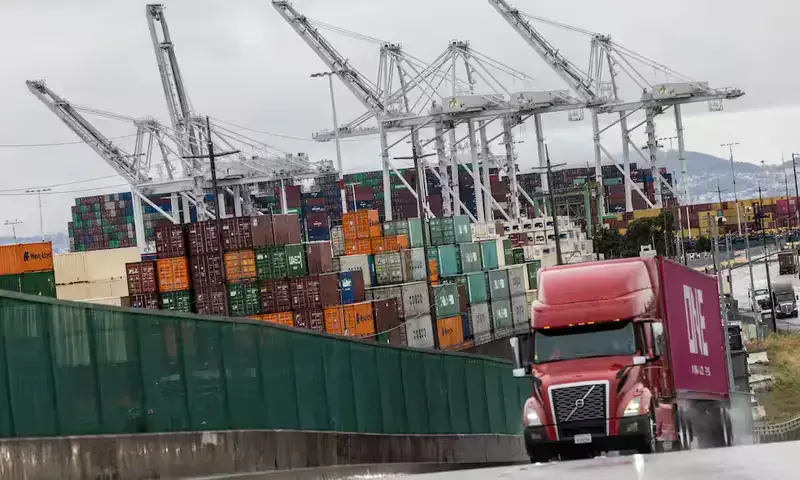Trump unveils new tariffs on imported goods
President Donald Trump announced a new wave of tariffs on a wide array of imported products, including a staggering 100% duty on branded pharmaceuticals and a 25% tariff on heavy duty trucks, set to take effect on October 1.
Tariffs have been hallmark of Trump’s second term, with rates ranging from 10% to 50% on various trading partners, contributing to a negative outlook on the global economy and stalling business decision-making.
The details of the new tariffs, shared via Truth Social, did not clarify whether they would stack on existing national tariffs or if countries with trade agreements, like the European Union and Japan would exempt.
In addition to pharmaceutical tariffs, Trump announced a 50% tariff on kitchen cabinets and bathroom vanities, along with a 30% tariff on upholstered furniture. He attributed these measures to a “flooding” of these products into the US from other countries.
The announcement led to the decline in pharmaceutical stocks across Asia with companies like Australia’s CSL hitting a six-year low and Japan’s Sunitomo Pharma dropping over 5%. A Chinese furniture index also fell by 1.1%.
These measures are part of Trump’s administration’s strategy to solidify its legal authority for imposing tariffs, especially amid a Supreme Court case regarding the legality of previous broad tariffs. The new 100% tariff on branded pharmaceuticals will apply to all imports unless the companies have initiated plans to build manufacturing plants in the US.
The Pharmaceutical Research and Manufacturers of America expressed concern that these tariffs could jeopardize ongoing US investments which are in the hundreds of billions.
In addition to pharmaceuticals, the administration is examining imports impacts related to wind turbines, airplanes, semiconductors and other critical materials opening new investigations into personal protective equipment and industrial machinery.
Tariffs have become a crucial foreign policy tool for Trump aimed at negotiating trade deals and applying political pressure. His administration previously claimed tariffs could generate $300 billion in revenue by year-end.
While tariffs on steel, aluminum, and automotive products have been established, the new measures are subject to existing trade agreements with Japan, the EU, and the UK, which limit tariff levels for specific items. Japan’s trade negotiator has indicated they are assessing the implications of the new tariffs on their agreements.
In 2024, U.S. imports of furniture totaled $25.5 billion, reflecting a 7% increase from the previous year, with 60% sourced from Vietnam and China. Trump’s earlier promises to impose furniture tariffs aimed to revitalize manufacturing in states like North Carolina and Michigan, where employment in the furniture industry has halved since 2000.
The increased tariffs on commercial vehicles are expected to raise transportation costs, countering Trump’s efforts to alleviate inflation, particularly on consumer goods. The new heavy-duty truck tariffs are touted as a means to protect domestic manufacturers from “unfair outside competition,” benefiting companies like Paccar and Daimler Truck.
However, the U.S. Chamber of Commerce has cautioned against these new tariffs, noting that the top five sources of truck imports Mexico, Canada, Japan, Germany, and Finland are allies of the U.S. Mexico, the largest exporter of medium- and heavy-duty trucks to the U.S., has voiced opposition to these tariffs, highlighting that their trucks contain significant U.S. content.
Last year, the U.S. imported nearly $128 billion in heavy vehicle parts from Mexico, which constituted about 28% of total imports in that category.
For the latest news, follow us on Twitter @Aaj_Urdu. We are also on Facebook, Instagram and YouTube.






















Comments are closed on this story.